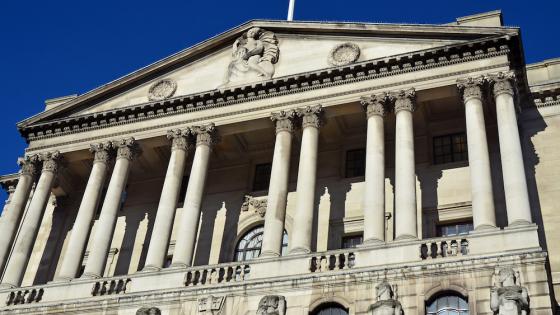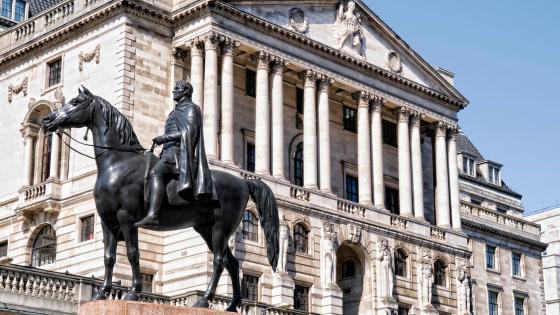The new Governor of the Bank of England, Andrew Bailey, faces a formidable challenge. The case for a powerful monetary stimulus to nurse the economy through the current crisis is overwhelming. Unfortunately, Mr. Bailey does not have the luxury of being able to slash interest rates by several hundred basis points as his predecessors might have done. There was precious little conventional monetary ammunition before the outbreak of the virus, and most of what remained has been exhausted.
Mr. Bailey’s Bank cannot sit this crisis out. Monetary policy must do whatever it can in support of the Government’s crisis response. There are three sets of issues to resolve: first, what can still be done within the conventional toolkit; second, what can be done in the space of formal monetary-fiscal coordination; and third, what must be done once the crisis is over (Barwell et al. 2020).
There are three basic options open to the Monetary Policy Committee to inject additional stimulus: further asset purchases, forward guidance and negative rates. None look particularly promising, but we suspect all will have to be explored.
Exhausting what remains of conventional space
There are three basic options open to the Monetary Policy Committee to inject additional stimulus: further asset purchases, forward guidance and negative rates. None looks particularly promising, but we suspect all will have to be explored.
There is still scope to stimulate the economy further through large-scale asset purchases, although long-term risk-free rates are already low. Purchases of riskier assets offer the possibility of more leverage on aggregate demand and might prove particularly powerful in a crisis in which credit and equity risk premia can widen significantly. However, objectives and governance are paramount in the design of any asset purchase scheme. Just because central bank reserves are injected into the system it does not mean that a scheme is necessarily a monetary policy operation.
There is little additional monetary space to be found in what has become known as forward guidance – that is, communication that reflects an orthodox reaction to events or news. The only way to ease the stance through communication is via a clear commitment to change that reaction function. That in turn requires a credible and transparent commitment device, preferably a target path for the price level or failing that an average inflation targeting regime.
There are valid concerns about whether maintaining negative rates for an extended period can ultimately prove counterproductive. Policymakers need to take the reversal rate literature seriously. However, there may well be an argument for negative interest rates for reserves to deal with large shocks and a disconnect between the one-to-one exchange rate between cash and deposits.
Whatever remains of the conventional monetary space is likely to prove insufficient. More will need to be done. The Chancellor is pursuing exactly the right strategy of ‘whatever it costs’ to support the economy.
Formal monetary – fiscal coordination
Whatever remains of the conventional monetary space is likely to prove insufficient. More will need to be done ((Baldwin and Weder di Mauro 2020). The chancellor is pursuing exactly the right strategy of ‘whatever it costs’ to support the economy. But that in turn requires a significant increase in government debt to finance critical support for the economy. In a crisis, greater coordination between the monetary and fiscal authorities may be justified with the Bank taking the necessary steps to create and preserve fiscal space. There are a range of options on the table.
In a crisis, greater coordination between the monetary and fiscal authorities may be justified with the Bank taking the necessary steps to create and preserve fiscal space.
Yield curve control provides a robust and transparent regime for preserving fiscal space and has the added virtue of signalling the transition of responsibility for demand management to the fiscal authority. Ideally, the purpose of a yield cap would be to suppress any contractionary increase in bond yields given a shift in rate expectations or the term premium (due to higher net issuance), but in a crisis it may keep a lid on rising sovereign credit and inflation risk premia.
Alternatively, fiscal space can be secured by working directly on quantities – that is, the Bank could engage in monetary financing. By committing to purchase government bonds in the magnitude issued, under strict conditions and only for a limited period, a central bank can support proper market functioning and prevent an unwarranted tightening in financial conditions.
A helicopter drop … is the most extreme of the three options, and carries the greatest risk to monetary stability: the nominal anchor cannot drag.
Helicopter money?
Finally, there is the possibility of a helicopter drop. Governments, not central banks, have the experience, infrastructure and remit of distributing cash to the general public. But the Bank can engineer a helicopter drop through a credible commitment that monetary financing will be permanent. Purchases of government debt, whether made in the secondary market or in a more unorthodox manner via primary purchases, would remain on the Bank’s balance sheet indefinitely. This is the most extreme of the three options, and carries the greatest risk to monetary stability: the nominal anchor cannot drag.
Our preference among this menu of highly unconventional policy options is for yield curve control. Indeed, a case can be made for yield curve control outside of a crisis on the grounds that it makes more sense to control bond prices than to control the quantity of purchases in the hope of influencing bond prices. However, it is clear that if the commitment to a target were to be tested by market participants then the policy would ultimately converge on monetary financing.
After the crisis – restoring space and normal service
The crisis will eventually pass. At that moment it is essential that the Governor and the Chancellor revisit the flaws that have been exposed in the monetary framework.
The first order of business is to devise a credible exit strategy from the extraordinary measures that will have been taken during the crisis. Some measures are harder to exit than others. An orderly retreat from yield curve control – by slowly relaxing your grip, widening the tolerance band around the target – seems easier to engineer than scaling back the quantum of purchases.
The fundamental problem the Bank faces is a lack of monetary space. There is one obvious solution: raise the inflation target to 4% to offset the decline in equilibrium real interest rates. It is imperative that any shift in the nominal anchor is not misunderstood as an expedient device in crisis management mode, so the decision must wait, but it cannot be ducked indefinitely.
Finally, the Bank itself needs an exit strategy from the ‘only game in town’ trap, in which the central bank and its balance sheet are the answers to every problem. There must be a return to the narrow focus of monetary and financial stability. The pursuit of broader social objectives and the conduct of industrial and credit policy must be left to the politicians.
References
Baldwin, R and B Weder di Mauro (2020), Mitigating the COVID Economic Crisis: Act Fast and Do Whatever It Takes, a VoxEU.org eBook, CEPR Press.
Barwell, R, J S Chadha and M Grady (2020), "Monetary Policy in Troubled Times: New Governor, New Agenda", NIESR Occasional Paper No. 59.






